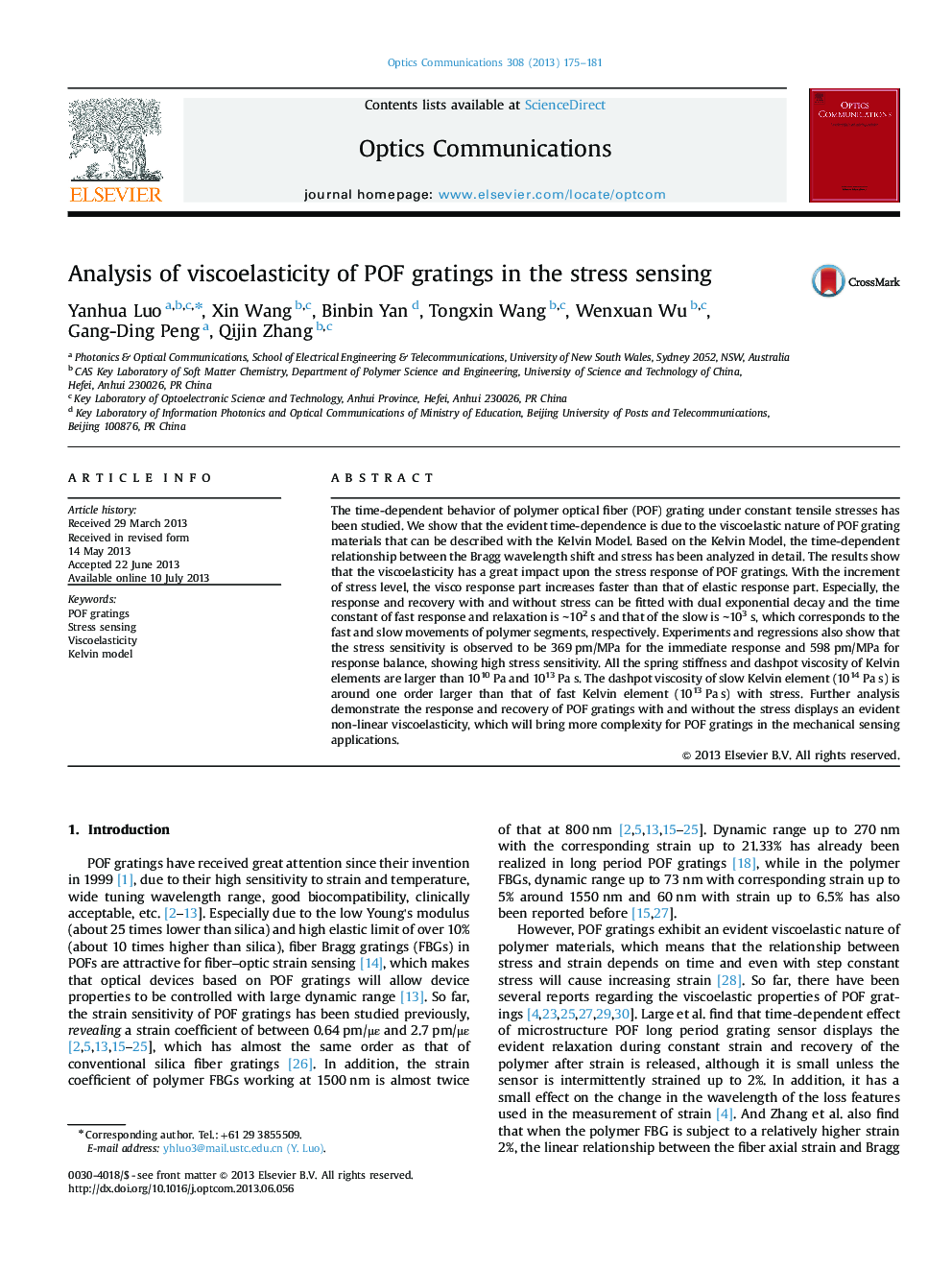| Article ID | Journal | Published Year | Pages | File Type |
|---|---|---|---|---|
| 1535042 | Optics Communications | 2013 | 7 Pages |
The time-dependent behavior of polymer optical fiber (POF) grating under constant tensile stresses has been studied. We show that the evident time-dependence is due to the viscoelastic nature of POF grating materials that can be described with the Kelvin Model. Based on the Kelvin Model, the time-dependent relationship between the Bragg wavelength shift and stress has been analyzed in detail. The results show that the viscoelasticity has a great impact upon the stress response of POF gratings. With the increment of stress level, the visco response part increases faster than that of elastic response part. Especially, the response and recovery with and without stress can be fitted with dual exponential decay and the time constant of fast response and relaxation is ∼102 s and that of the slow is ∼103 s, which corresponds to the fast and slow movements of polymer segments, respectively. Experiments and regressions also show that the stress sensitivity is observed to be 369 pm/MPa for the immediate response and 598 pm/MPa for response balance, showing high stress sensitivity. All the spring stiffness and dashpot viscosity of Kelvin elements are larger than 1010 Pa and 1013 Pa s. The dashpot viscosity of slow Kelvin element (1014 Pa s) is around one order larger than that of fast Kelvin element (1013 Pa s) with stress. Further analysis demonstrate the response and recovery of POF gratings with and without the stress displays an evident non-linear viscoelasticity, which will bring more complexity for POF gratings in the mechanical sensing applications.
